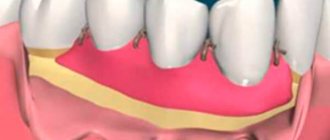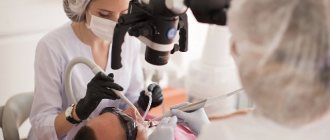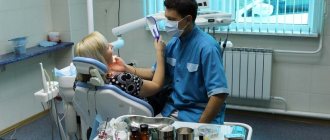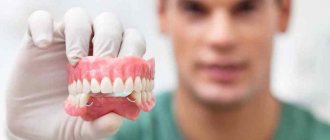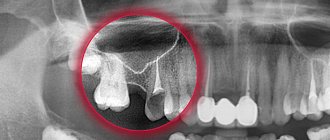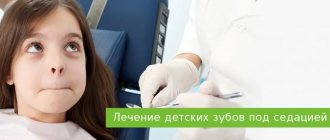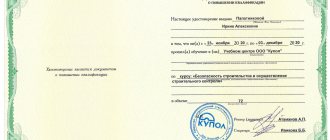| [organizational and legal form, name of organization, enterprise] | I approve [position, signature, full name of the manager or other official authorized to approve the job description] [day month Year] M.P. |
Job description of a dental therapist [name of organization, enterprise, etc.]
This job description has been developed and approved in accordance with the provisions of the Labor Code of the Russian Federation, Decree of the Government of the Russian Federation of February 14, 2003 N 101 “On the length of working hours of medical workers depending on the position and (or) specialty they occupy”, resolutions of the State Committee for Labor of the USSR and Presidium of the All-Union Central Council of Trade Unions dated October 25, 1974 N 298/P-22 “On approval of the list of industries, workshops, professions and positions with hazardous working conditions, work in which gives the right to additional leave and a shortened working day” and other regulations, regulating labor relations.
Legislation on professional standards
The procedure for working with professional standards is prescribed by Art. 195.3 of the Labor Code. It was approved by Federal Law No. 122-FZ dated May 2, 2015. It notes that some organizations must necessarily use professional standards.
These are the following institutions (according to Government Decree No. 584 dated June 27, 2016):
- state and municipal sector;
- companies that are more than half owned by the state;
- where there are positions that need to be provided with social guarantees established by legal acts;
- where there are positions for which professional standards must be applied.
Answers to popular questions about professional standards can be found in the letter of the Ministry of Labor dated 04/04/2016 No. 14-0/10/B-2253.
IV. Responsibility
The dentist is responsible for:
1. For improper performance or failure to fulfill one’s job duties provided for in this job description - within the limits determined by the current labor legislation of the Russian Federation.
2. For offenses committed in the course of carrying out their activities - within the limits determined by the current administrative, criminal and civil legislation of the Russian Federation.
3. For causing material damage - within the limits determined by the current labor and civil legislation of the Russian Federation.
4. ____________________________________________________________________
This job description has been developed in accordance with the provisions (requirements) of the Labor Code of the Russian Federation dated December 30, 2001 No. 197 FZ (Labor Code of the Russian Federation) (with amendments and additions), the professional standard “Dentist” approved by order of the Ministry of Labor and Social Protection of the Russian Federation Federation dated May 10, 2016 No. 227n and other legal acts regulating labor relations.
Why are professional standards needed in private companies?
Private owners do not necessarily need to use these documents. Some organizations, however, use them. The reasons may be:
- disagreements between the employer and employees regarding labor tasks are resolved much easier;
- fewer disputes with agencies inspecting the organization;
- you can approve the requirements for applicants for a particular position in the company;
- You can establish the reasons for employees to undergo additional training.
Companies can use both professional standards and qualification reference books.
Job description for a general dentist
HIV infections; - resuscitation techniques; — basics of asepsis and antiseptics; — methods of sterilization of instruments; — first aid methods for bleeding, collapse, anaphylactic shock; — basics of epidemiology; — basics of valeology and sanology; — medical ethics and deontology; — psychology of professional communication; — basics of clinical examination; — basics of disaster medicine; — the procedure for maintaining primary accounting and reporting documentation, including in electronic form; — basics of labor legislation; — labor protection and fire safety rules. 2. Job responsibilities of a dental therapist: 2.1.
Performs initial patient visits. Determines the tactics of patient management in accordance with established rules and standards. 2.2.
Contents of the professional standard “Dentist”
The professional standard for a dentist was approved by Order of the Ministry of Labor dated May 10, 2016 No. 227n. It is compiled for the professional activity of “dental practice”. Code - 02.005.
The goals of dental practice specified in the document are the prevention, diagnosis and treatment of diseases of the teeth, oral cavity, and maxillofacial area. Only one type of economic activity is named. This is a dental practice (code 86.23).
The generalized labor function—providing medical care for dental diseases—includes 6 labor functions:
- conducting an examination of the patient to identify a diagnosis;
- prescribing treatment, monitoring its safety and effectiveness;
- creation, implementation and monitoring of the effectiveness of individual rehabilitation programs;
- carrying out preventive and sanitary measures;
- carrying out sanitary and hygienic education of citizens to lead a healthy lifestyle;
- management activities.
The job title indicated for this specialist is a dentist. A higher medical education is required. Special conditions for admission to work and other characteristics are prescribed.
For each labor function mentioned above, its own labor actions are prescribed. Here are some of them:
- initial and repeated examinations of the patient;
- drawing up an algorithm for making a preliminary diagnosis;
- referring patients for laboratory tests;
- making a final diagnosis;
- interpretation of information from the initial examination, laboratory tests, instrumental studies;
- patient survey;
- selection of anesthesia;
- carrying out physiotherapeutic procedures;
- monitoring the progress of treatment;
- drawing up a treatment plan;
- patient consultation;
- treatment of primary and permanent teeth;
- selection of drugs for rehabilitation;
- prescription and implementation of preventive procedures;
- formation of motivation in patients to maintain a healthy lifestyle;
- maintaining medical records;
- drawing up a report on your work;
- etc.
For labor functions, the skills and knowledge necessary for a dentist to work are written.
At the end of the professional standard there is information about the organizations that developed it.
I. General provisions
1. A person with a higher education – specialty (“Dentistry”) is appointed to the position of dentist. For professional growth and assignment of a qualification category, the fulfillment of criteria corresponding to the specialty is required. Main ways to improve qualifications:
— advanced training programs;
— professional retraining programs;
— internships;
— trainings in simulation centers;
— use of modern distance educational technologies (educational portal and webinars);
— participation in congresses, conferences, master classes
2. There are no work experience requirements.
3. Additional requirements for permission to work:
— undergoing mandatory preliminary (upon employment) and periodic medical examinations (examinations), as well as extraordinary medical examinations (examinations) in the manner established by the legislation of the Russian Federation;
- absence of a criminal record and (or) the fact of criminal prosecution or termination of criminal prosecution on rehabilitative grounds.
4. Appointment to the position of a dentist, as well as dismissal from it, is made by order of the head of the organization.
5. A dentist should know:
5.1. The biological role of the dentofacial region, the biomechanics of chewing, age-related changes in the maxillofacial region, the peculiarities of the influence of the external and internal environment on it
5.2. Basic principles of diagnosing infectious diseases, medical indications for hospitalization of patients with infectious diseases
5.3. Topographic anatomy of the head, maxillofacial region, features of blood supply, innervation and lymphatic system, structure of teeth, embryology of the dentofacial region, main disorders of embryogenesis
5.4. Etiology, pathogenesis, diagnosis of common diseases
5.5. The relationship between the structure and functioning of the dental system and disorders of the nasopharynx, respiratory and digestive systems, and musculoskeletal system
5.6. Basic issues of normal and pathological physiology of the dental system, its relationship with the functional state of other body systems and the levels of their regulation
5.7. Methods for diagnosing diseases of the temporomandibular joint and salivary glands in children and adults
5.8. Normal structure of teeth, jaws and structural disorders due to dental and facial anomalies
5.9. Clinical picture, diagnostic methods, classification of diseases of the teeth, periodontium, oral mucosa, lips
5.10. Clinical picture, diagnostic methods, classification of diseases of the bone tissue of the jaws, the peripheral nervous system of the maxillofacial region, the temporomandibular joint
5.11. Clinical manifestations of the main syndromes requiring surgical treatment
5.12. The complex relationship between dental health, nutrition, general health, disease, and medication use
5.13. Normal functioning of the dental system and disruption of its functions due to malocclusion
5.14. Clinical picture, diagnostic methods, classification of diseases of the salivary glands, congenital, acquired anomalies of teeth, dentition, alveolar processes, jaws, face
5.15. Clinical picture, symptoms of major diseases and borderline conditions of the maxillofacial region in adults and children, their diagnosis
5.16. The importance of special and additional research methods for the differential diagnosis of dental diseases
5.17. Medical indications and contraindications for the use of x-ray and other methods of additional examination
5.18. Medical devices used in dentistry (Principles of design and operating rules)
5.19. International statistical classification of diseases and related health problems
5.20. Clinical manifestations and course of common diseases, injuries and conditions in elderly and senile patients
5.21. Features of medical examination of elderly and senile patients
5.22. Structure of morbidity in old and senile age
5.23. Psychological and behavioral characteristics of elderly and senile patients
5.24. Features of general and special hygiene of elderly and senile patients
5.25. Features of pharmacokinetics and pharmacodynamics of drugs in elderly and senile patients
5.26. Methods of using medical devices, chemicals and drugs to control dental plaque
5.27. Features of providing medical care in emergency and emergency forms for dental diseases
5.28. Groups of drugs, their pharmacokinetics, pharmacodynamics, drug compatibility
5.29. General and functional methods of treating patients with maxillofacial pathology
5.30. Basic principles of treating patients with infectious diseases
5.31. Basic methods of auxiliary surgical treatment of patients with dentoalveolar anomalies
5.32. Morphological changes in the dental system during orthopedic and orthodontic treatment
5.34. Clinical picture, basic methods of orthopedic treatment of pathology of hard tissues, periodontal diseases, pathological abrasion, pathology of the temporomandibular joint
5.35. Clinical picture, symptoms of major diseases and borderline conditions of the maxillofacial region in adults and children, their treatment
5.36. Treatment methods for dental and facial anomalies in children and adults
5.37. Principles, techniques and methods of anesthesia in dentistry
5.38. Modern medical products (equipment, instruments and materials) used in dentistry
5.39. Medical indications and contraindications for rehabilitation measures for various diseases and pathological conditions
5.40. Basic principles of rehabilitation of patients with infectious diseases
5.41. Basic principles of rehabilitation of patients with diseases of the maxillofacial area
5.42. Principles of clinical observation in various categories of patients and among the population
5.43. Features of specific and nonspecific prevention of infectious diseases
5.44. Features of cancer prevention
5.45. Fundamentals of preventive medicine aimed at improving public health
5.46. Basic criteria for a healthy lifestyle and methods for its formation
5.47. Social, hygienic and medical aspects of alcoholism, drug addiction, substance abuse, basic principles of their prevention
5.48. Forms and methods of sanitary and hygienic education among the population and medical workers
5.49. Basic hygiene measures of a health nature that promote health and prevent diseases
5.50. The procedure for providing medical care by profile
5.51. Standards of medical care by disease
5.52. Clinical recommendations (treatment protocols) regarding the provision of medical care
5.53. Conditions requiring emergency and emergency medical care
5.54. Labor protection requirements, fire safety, emergency procedures
5.55. Rules for the use of personal protective equipment
5.56. Sanitary and epidemiological requirements
5.57. Methodology for performing resuscitation measures
5.58. Rules for issuing documents certifying temporary disability
5.59. Rules for preparing documents certifying temporary disability
5.60. Principles of conducting examination of temporary disability
5.61. Job responsibilities of medical workers in medical organizations
5.62. Criteria for assessing the quality of medical care
5.63. Features of maintaining medical records
5.64. General issues of organizing medical care to the population
5.65. Standards and quality management systems for medical (dental) services
5.66. Legislation of the Russian Federation in the field of health care and regulations governing the activities of medical organizations
5.67. _____________________________________________________________________
6. The dentist reports directly to __________________________.
7. During the absence of a dentist (vacation, illness, etc.), his duties are performed by a person appointed in the prescribed manner. This person acquires the corresponding rights and is responsible for their proper execution.
8. A dentist must observe medical confidentiality.
9. A dentist must comply with the principles of medical ethics and deontology when working with patients (their relatives/legal representatives) and colleagues.
10. ________________________________________________________________
How to introduce work with professional standards into an organization
There is a certain procedure for implementing professional standards in a company:
- The head of the company, by his order, assembles a working group. It includes lawyers, personnel officers, heads of departments (structural units) or other competent employees. The group’s tasks are to draw up a plan for the organization’s transition to professional standards.
- Members of the working group compare professional standards and positions available in the company. Select those standards that are suitable for the positions.
- If necessary, positions are renamed.
- Determine whether employees require additional training.
- Make changes to job descriptions in the organization.
Important! Employees must undergo additional training when, according to the professional standard, the position requires higher qualifications. If the employee refuses to study, he is transferred to another position or dismissed.
III. Rights
A dentist has the right:
1. Request and receive the necessary information, as well as materials and documents related to issues of their activities.
2. Improve your qualifications, undergo retraining (retraining)
3. Take part in the discussion of issues included in his functional responsibilities.
4. Make suggestions and comments on how to improve activities in the assigned area of work.
5. Require the management of the organization to provide assistance, including ensuring organizational and technical conditions and execution of the established documents necessary for the performance of official duties.
6. Make independent decisions, guided by qualification requirements and job responsibilities
7.___________________________________________________________
